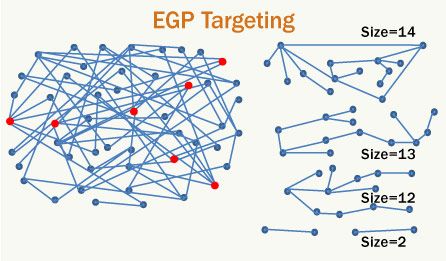Aug 21, 2008
Religion, Radicalization and the future of Terrorism
Posted by Roderick Jones in categories: cybercrime/malcode, defense, futurism, military
The UK’s Guardian today published details of a report produced by Britain’s Security Service (MI5) entitled, ‘Understanding radicalization and violent extremism in the UK’. The report is from MI5’s internal behavioral analysis unit and contains within it some interesting and surprising conclusions. The Guardian report covers many of these in depth (so no need to go over here) but one point, which is worth highlighting is the claim made within the report that religion is and was not a contributory factor in the radicalization of the home-grown terrorist threat that the UK faces. In fact, the report goes on to state that a strong religious faith protects individuals from the effects of extremism.This viewpoint is one that is gathering strength and coincides with an article written by Martin Amis in the Wall Street Journal, which also argues that ‘terrorism’s new structure’ is about the quest for fame and thirst for power, with religion simply acting as a “means of mobilization”.
All of this also tends to agree with the assertion made by Philip Bobbit in ‘Terror and Consent’, that al-Qaeda is simply version 1.0 of a new type of terrorism for the 21st century. This type of terrorism is attuned to the advantages and pressures of a market based world and acts more like a Silicon Valley start-up company than the Red Brigades — being flexible, fast moving and wired — taking advantage of globalization to pursue a violent agenda.
This all somewhat begs the question of, what next? If al-Qaeda is version 1.0 what is 2.0? This of course is hard to discern but looking at the two certain trends, which will shape humanity over the next 20 years — urbanization and virtualization — throws up some interesting potential opponents who are operating today. The road to mass urbanization is currently being highlighted by the 192021 project (19 cities, 20 million people in the 21st century) and amongst other things, points to the large use of slum areas to grow the cities of the 21st century. Slum areas are today being globally exploited from Delhi to Sao Paulo by Nigerian drug organizations that are able to recruit the indigenous people to build their own cities within cities. This kind of highly profitable criminal activity in areas beyond the vision of government is a disturbing incubator.

Increased global virtualization complements urbanization as well as standing alone. Virtual environments provide a useful platform for any kind of real-life extremist (as is now widely accepted) but it is the formation of groups within virtual spaces that then spill-out into real-space that could become a significant feature of the 21st century security picture. This is happening with, ‘Project Chanology’ a group that was formed virtually with some elements of the Anonymous movement in order to disrupt the Church of Scientology. While Project Chanology (WhyWeProtest Website)began as a series of cyber actions directed at Scientology’s website, it is now organizing legal protests of Scientology buildings. A shift from the virtual to the real. A more sinister take on this is the alleged actions of the Patriotic Nigras — a group dedicated to the disruption of Second Life, which has reportedly taken to using the tactic of ‘swatting’ — which is the misdirection of armed police officers to a victim’s home address. A disturbing spill-over into real-space. Therefore, whatever pattern future terrorist movements follow, there are signs that religion will play a peripheral rather than central role.
Originally posted on the Counterterrorism blog.









